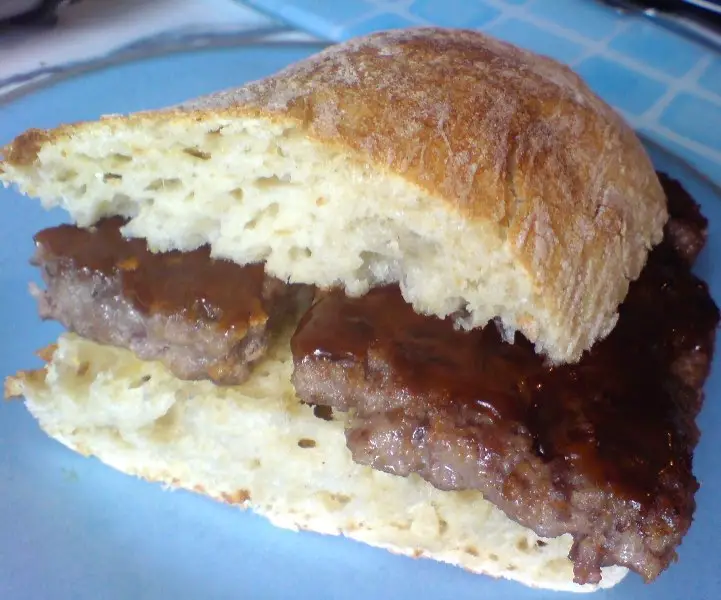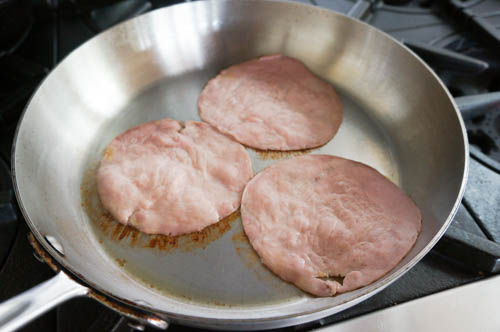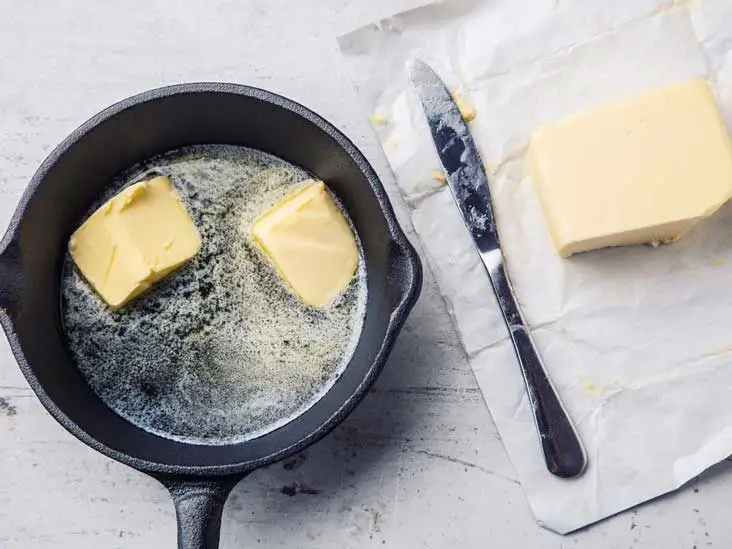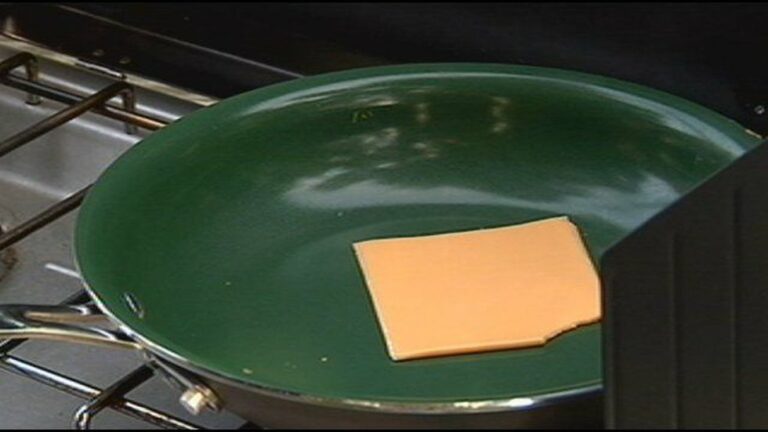Many people have experienced the unpleasant surprise of discovering that their cooked chicken has a slimy texture. This can be off-putting and raise concerns about the safety of the chicken. In this article, we will explore why chicken can become slimy after cooking and provide tips on how to determine if it is safe to eat.
Key Takeaways:
- Slimy chicken is a common concern for many people.
- The sliminess in chicken can be caused by bacteria, specifically pseudomonas.
- Spoilage signs include foul odors, discoloration, and visible mold growth.
- Proper storage and cooking techniques can prevent chicken from becoming slimy.
- If you have slimy chicken that you don’t want to eat, there are alternative uses for it.
Causes of Slimy Chicken
Chicken can become slimy due to the presence of bacteria, specifically pseudomonas. These bacteria thrive in low temperatures and high humidity, making chicken an ideal environment for their growth. When pseudomonas bacteria multiply, they produce enzymes that break down the proteins and fats in the chicken, leading to a slimy texture.
While pseudomonas is a common cause of slimy chicken, it’s important to note that not all bacteria will result in this texture change. Some beneficial bacteria, such as those used in the fermentation of certain foods, can also create a slimy texture but are safe to consume. However, in the case of chicken, a slimy texture is usually a sign of spoilage and should not be consumed.
Pseudomonas Bacteria and Chicken Spoilage
The pseudomonas bacteria that cause slimy chicken are known to be one of the main culprits of food spoilage. These bacteria can grow rapidly in the right conditions, which is why proper storage and handling of chicken is crucial to prevent their growth. By following safe food handling practices and being aware of the signs of spoilage, you can minimize the risk of encountering slimy chicken.
The Role of Temperature and Hygiene
Temperature plays a significant role in the growth of pseudomonas bacteria. These bacteria thrive in temperatures between 40°F (4°C) and 140°F (60°C), which is why refrigeration and proper cooking are essential. Storing chicken at temperatures below 40°F (4°C) can help slow down bacterial growth, while cooking the chicken to an internal temperature of 165°F (74°C) kills any bacteria present.
In addition to temperature control, good hygiene practices are important to prevent the spread of bacteria. It’s crucial to clean and sanitize all surfaces and utensils that come into contact with raw chicken to avoid cross-contamination. Washing hands thoroughly before and after handling raw chicken is also essential.
| Cause | Effect |
|---|---|
| Pseudomonas bacteria | Breakdown of proteins and fats in chicken |
| Low temperatures and high humidity | Optimal conditions for pseudomonas growth |
| Improper storage and handling | Rapid bacterial growth and potential spoilage |
Signs of Spoiled Chicken
When it comes to determining if chicken has gone bad, there are several signs you can look out for. These indicators will help you determine if the chicken is safe to consume or if it has spoiled. Paying attention to the odor, darkening, and discoloration of the chicken can provide valuable insights into its freshness.
One of the first signs of spoiled chicken is a foul odor. If you notice a sour or sulfur-like smell coming from the chicken, it is likely spoiled and should be discarded. This unpleasant odor is a result of bacterial growth and indicates that the chicken is no longer safe to eat.
In addition to the odor, you should also check for darkening and discoloration of the chicken. Spoiled chicken may appear gray or green in color, which is a clear indication that it has gone bad. Any visible mold growth or excessive liquid in the packaging are also signs of spoilage and should be taken seriously.
Table: Signs of Spoiled Chicken
| Signs | Indicators of Spoilage |
|---|---|
| Foul Odor | Sour or sulfur-like smell |
| Darkening | Gray or green flesh |
| Discoloration | Mold growth or excessive liquid |
By being aware of these signs of spoiled chicken, you can make informed decisions about the safety of the chicken you have. If you notice any of these indications, it’s best to err on the side of caution and discard the chicken to avoid the risk of foodborne illness.
How to Prevent Chicken from Becoming Slimy
Proper storage and cooking practices are key to preventing chicken from becoming slimy. By following these guidelines, you can ensure that your chicken stays fresh and safe to eat.
Proper Storage:
One of the main factors in preventing slimy chicken is storing it correctly. Raw chicken should always be stored in the refrigerator or freezer, separate from other foods to avoid cross-contamination. Keep the temperature of your refrigerator at 40°F or below to inhibit bacterial growth. It’s important to use chicken within its expiration date to ensure freshness.
Cooking Temperature:
Cooking chicken to the correct internal temperature is crucial for killing any bacteria that may be present. The USDA recommends cooking chicken to an internal temperature of 165°F (74°C). This ensures that all harmful bacteria, such as salmonella, are destroyed. A reliable meat thermometer can help you accurately measure the internal temperature of the chicken.
Other Tips:
In addition to proper storage and cooking temperature, there are a few other tips to keep in mind. Avoid washing raw chicken, as this can spread bacteria around your kitchen. Instead, cook the chicken thoroughly to eliminate any harmful bacteria. It’s also a good idea to check the packaging for any signs of damage or leakage before purchasing chicken.
By following these guidelines, you can prevent chicken from becoming slimy and reduce the risk of foodborne illness. Proper storage and cooking practices are essential for maintaining the quality and safety of your chicken.
| Storage Guidelines | Cooking Temperature |
|---|---|
| Store raw chicken in the refrigerator or freezer | Cook chicken to an internal temperature of 165°F (74°C) |
| Keep refrigerator temperature at 40°F or below | Use a reliable meat thermometer to measure temperature |
| Separate raw chicken from other foods to avoid cross-contamination | Avoid washing raw chicken to prevent bacterial spread |
| Use chicken within its expiration date | Check packaging for signs of damage or leakage |
Alternative Uses for Slimy Chicken
If you find yourself with slimy chicken that you don’t want to eat, there are alternative uses for it. Instead of letting it go to waste, consider these creative options:
Making Chicken Stock
One of the best ways to salvage slimy chicken is by using it to make flavorful chicken stock. Simply simmer the chicken with vegetables, herbs, and spices in a pot of water for several hours. The slow cooking process will help extract the rich flavors from the chicken, resulting in a delicious stock that can be used as a base for soups, stews, and sauces.
Feeding Pets
Another option for utilizing slimy chicken is to feed it to your pets (after cooking and removing any bones). Dogs and cats can benefit from the protein and nutrients found in chicken, and they often enjoy the taste. Just be sure to remove any excess fat or seasoning before serving it to your furry friends.
Using as Fertilizer
If you have a green thumb, you can repurpose slimy chicken as fertilizer for your plants. Bury the chicken in your garden or compost pile, allowing it to decompose and enrich the soil with nutrients. This natural fertilizer can help promote healthy plant growth and reduce waste.
These alternative uses for slimy chicken not only prevent food waste but also provide practical solutions for repurposing the chicken in a beneficial way. Whether you choose to make chicken stock, feed it to your pets, or use it as fertilizer, you can find value in what might otherwise be considered spoiled food.
| Alternative Use | Benefits |
|---|---|
| Making Chicken Stock | Extracts rich flavors for soups, stews, and sauces |
| Feeding Pets | Provides additional protein and nutrients |
| Using as Fertilizer | Natural way to enrich soil and promote healthy plant growth |
Proper Chicken Storage and Expiration
When it comes to ensuring the freshness and safety of chicken, proper storage and attention to expiration dates are crucial. By following these guidelines, you can prevent bacterial growth and maintain the quality of your chicken.
First and foremost, always check the expiration date when purchasing chicken. Choose a package that allows for a few days of storage to ensure you have enough time to consume it before it spoils. Additionally, pay attention to the packaging of the chicken. Look for any signs of damage or tampering, as this can affect its shelf life.
Refrigeration
Raw chicken should be stored in the refrigerator at a temperature of 40°F or below. Make sure to keep it separate from other foods to avoid cross-contamination. If the chicken is not going to be used within a day or two, consider freezing it instead for longer-term storage.
Freezing
When storing chicken in the freezer, it’s important to do so properly to maintain its quality. Package the chicken in airtight containers or freezer bags to prevent freezer burn. Label the packages with the date to keep track of their freshness. When it comes to thawing frozen chicken, plan ahead and use safe methods to avoid bacterial growth.
In summary, proper chicken storage involves checking expiration dates, refrigerating at the correct temperature, and freezing when necessary. By following these guidelines, you can ensure the safety of your chicken and enjoy it with peace of mind.
| Storage Method | Temperature | Duration |
|---|---|---|
| Refrigeration | 40°F or below | 3-4 days |
| Freezing | 0°F | Up to 9 months |
How to Thaw Chicken Safely
Thawing chicken safely is crucial to prevent the growth of harmful bacteria and ensure the quality of the meat. There are several methods you can use to thaw chicken, depending on your time constraints and preferences.
If you have enough time, the best method is to thaw chicken in the refrigerator. Simply place the frozen chicken in a leak-proof bag or container and let it thaw slowly in the refrigerator. It’s important to note that this method requires some planning ahead, as it can take 24 hours or more, depending on the size of the chicken pieces.
If you need to thaw chicken more quickly, you can use the cold water method. Fill a clean sink or a large bowl with cold water and submerge the wrapped chicken in it. Make sure to change the water every 30 minutes to keep it cold. This method usually takes about 1-2 hours, depending on the size and thickness of the chicken.
Another option is to use the microwave to defrost chicken. Most microwaves have a defrost setting specifically designed for thawing frozen food. Follow the manufacturer’s instructions for your microwave to avoid partially cooking the chicken. Keep in mind that this method should be used immediately after thawing to prevent bacterial growth.
Thawing Methods Comparison
| Thawing Method | Time | Convenience | Quality |
|---|---|---|---|
| Refrigerator | 24+ hours | Low effort, requires planning | Best quality |
| Cold Water | 1-2 hours | Fast | Good quality |
| Microwave | Varies by size | Instant | Good quality if used immediately |
Now that you know the different thawing methods, choose the one that suits your needs and ensures the safety of your chicken. Remember to always follow proper food safety practices to avoid the risk of foodborne illness.
Conclusion
In conclusion, ensuring chicken safety is crucial to avoid the risk of foodborne illness. The slimy texture of cooked chicken is often a sign of spoilage, caused by bacteria such as pseudomonas. It is important to be aware of the signs of spoiled chicken, including foul odors, discoloration, and excessive liquid in the packaging.
To prevent chicken from becoming slimy, proper storage is key. Store raw chicken separately in the refrigerator or freezer, and cook it to the correct internal temperature to eliminate any bacteria. Avoid washing raw chicken, as this can spread bacteria. Additionally, be mindful of the expiration date and use chicken within the recommended timeframe.
If you encounter slimy chicken and are unsure if it is safe to eat, it is best to err on the side of caution and discard it. By following proper storage and cooking practices, you can enjoy chicken safely and reduce the risk of foodborne illness. Remember, your health and well-being are our top priority.
FAQ
Why does chicken become slimy after cooking?
Chicken can become slimy due to the presence of bacteria, specifically pseudomonas, which thrive in low temperatures and high humidity. These bacteria can cause the proteins and fats in the chicken to break down, leading to a slimy texture.
How can I determine if chicken has gone bad?
Look out for signs such as a foul odor, such as a sour or sulfur-like smell, discoloration such as gray or green flesh, visible mold growth, or excessive liquid in the packaging. These are indicators of spoiled chicken.
How can I prevent chicken from becoming slimy?
Proper storage is key. Store raw chicken in the refrigerator or freezer, separate from other foods. Cook chicken to the correct internal temperature. Use chicken within its expiration date and avoid washing raw chicken, as this can spread bacteria.
What can I do with slimy chicken that I don’t want to eat?
You can use it to make flavorful chicken stock, feed it to your pets (after cooking and removing bones), or use it as fertilizer by burying it in your garden or compost pile.
How should I store chicken and for how long?
When purchasing chicken, check the expiration date and choose a package that allows for a few days of storage. Store raw chicken in the refrigerator at 40°F or below, and in the freezer for longer-term storage. Cooked chicken should be stored in the refrigerator for 3-4 days.
How should I thaw chicken safely?
Thaw chicken in the refrigerator, allowing 4-5 hours per pound of meat. You can also thaw chicken in cold water, changing the water every 30 minutes, or use the microwave on the defrost setting. Be cautious with repeated thawing and refreezing as it can lead to bacterial growth.



